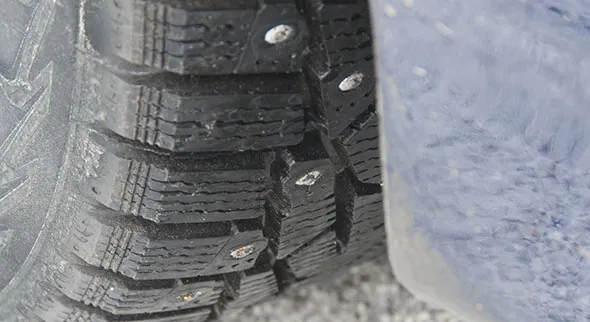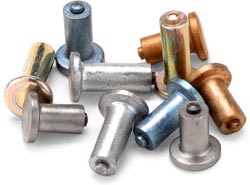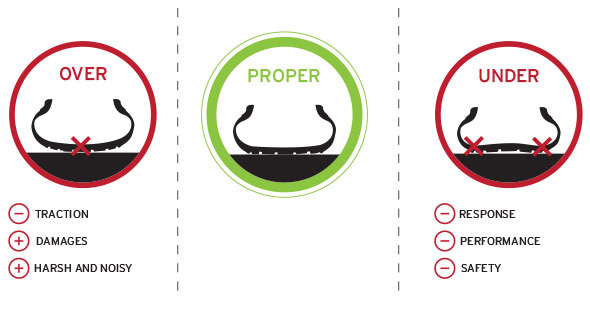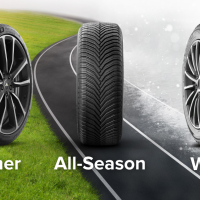How Do I Break In Studded Tires?

How Do I Break In Studded Tires?
Studs for tires used in winter driving feature a tungsten carbide pin encased in a cylindrical metal housing that looks like a carpenter nail with its shaft cut short. Typically 80 to 100 studs per tire are inserted into small holes molded in the tire’s tread design.
The tire’s tread is often lubricated (a 2% soapy water solution is desired) to facilitate stud installation. A special tool is inserted into the molded hole, spreads the tread rubber, inserts the stud towards the bottom of the hole and retracts. With the stud inserted, the tread rubber compresses around the stud’s flat head and cylindrical housing to hold it in place.
Because it takes some time for the lubricant to evaporate and the tread rubber to securely compress around the stud, new studded tires require a break-in period.
Relatively slow driving (less than 31 mph/50 km/h) without fast acceleration, aggressive cornering or hard braking is recommended for the first 62 miles (100 kilometers) to allow for proper stud seating. Some tire manufacturers also recommend not exceeding 62 mph/100 km/h for the next 248 miles (400 kilometers). This will allow the lubricant to evaporate and the tread rubber to conform to the shape of the stud.
Note: Normal studded tires are not recommended for high speed driving because it will cause the studs to wear faster and increase their possibility of being ejected.

























